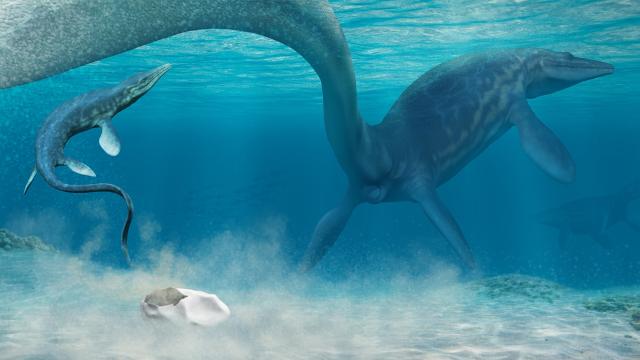New research suggests early dinosaurs laid eggs with soft shells, and mosasaurs ” gigantic marine reptiles ” did so, too, laying soft-shelled eggs of massive proportions.
Birds and crocodiles lay eggs with hard, heavily calcified shells, while most lizards, snakes, and turtles lay eggs that are soft and leathery. Soft-shelled eggs appeared first, but paleontologists have struggled to understand the evolutionary transition from soft to hard egg shells. As you can probably guess, soft shells don’t preserve well, and very few exist in the fossil record.
Happily, two papers published today in Nature are shedding new light on the evolution of soft-shelled eggs, in studies made possible by the discovery of some rather extraordinary fossils.

The first paper, co-authored by paleontologist Mark Norell from the American Museum of Natural History in New York, is challenging the conventional presumption that dinosaurs, like modern birds (also dinosaurs), laid hard shelled-eggs.
“The assumption has always been that the ancestral dinosaur egg was hard-shelled,” explained Norell in a press release. “Over the last 20 years, we’ve found dinosaur eggs around the world. But for the most part, they only represent three groups ” theropod dinosaurs, which includes modern birds, advanced hadrosaurs like the duck-bill dinosaurs, and advanced sauropods, the long-necked dinosaurs. At the same time, we’ve found thousands of skeletal remains of ceratopsian dinosaurs, but almost none of their eggs. So why weren’t their eggs preserved? My guess ” and what we ended up proving through this study ” is that they were soft-shelled.”
For the study, Norell and his colleagues studied fossilised eggs belonging to Protoceratops and Mussaurus, both four-legged, plant-eating dinosaurs. Protoceratops, an animal no larger than sheep, lived between 75 million and 71 million years ago in what is now Mongolia, while Mussaurus, a long-necked, long-tailed sauropod, lived between 227 million and 208 million years ago in what is now Argentina.
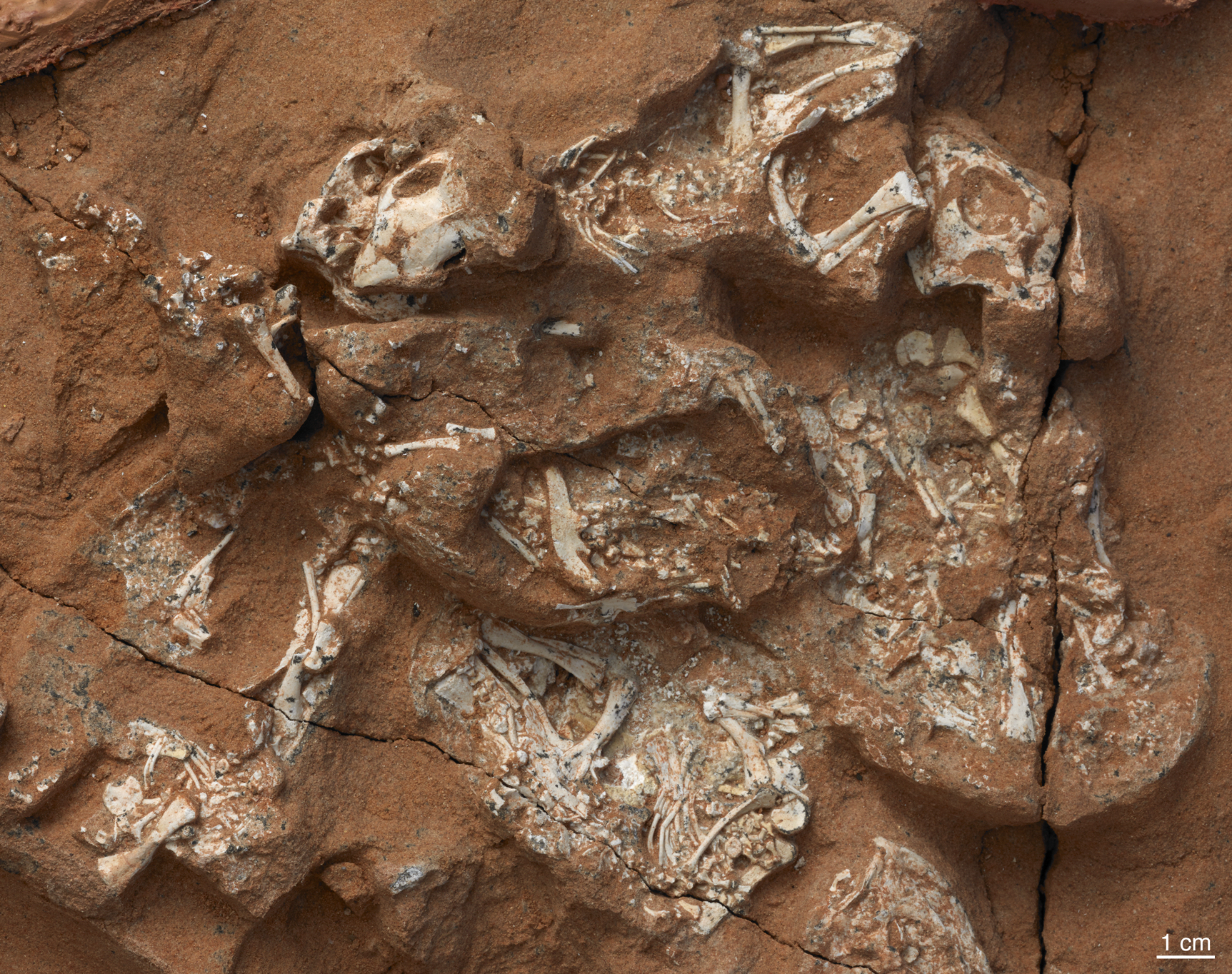
A Protoceratops skeleton was found next to her collection of a dozen eggs, which included the skeletal remnants of embryos still in their gestational position. The lone Mussaurus egg also contained an embryo. Chemical analysis of these fossilised eggs, along with a comparative study of eggshells from animals such as turtles, birds, and crocodiles, showed that the eggs were “non-biomineralised,” meaning they were leathery and soft prior to fossilisation.
The authors then compared these dino eggs to eggs produced by 112 other extinct and living relatives, allowing them to construct an evolutionary family tree. By tracking the development of eggshells over the course of the Mesozoic, the researchers concluded that hard-shelled, calcified eggs evolved independently at least three times in dinosaurs, from animals that laid soft-shelled eggs.
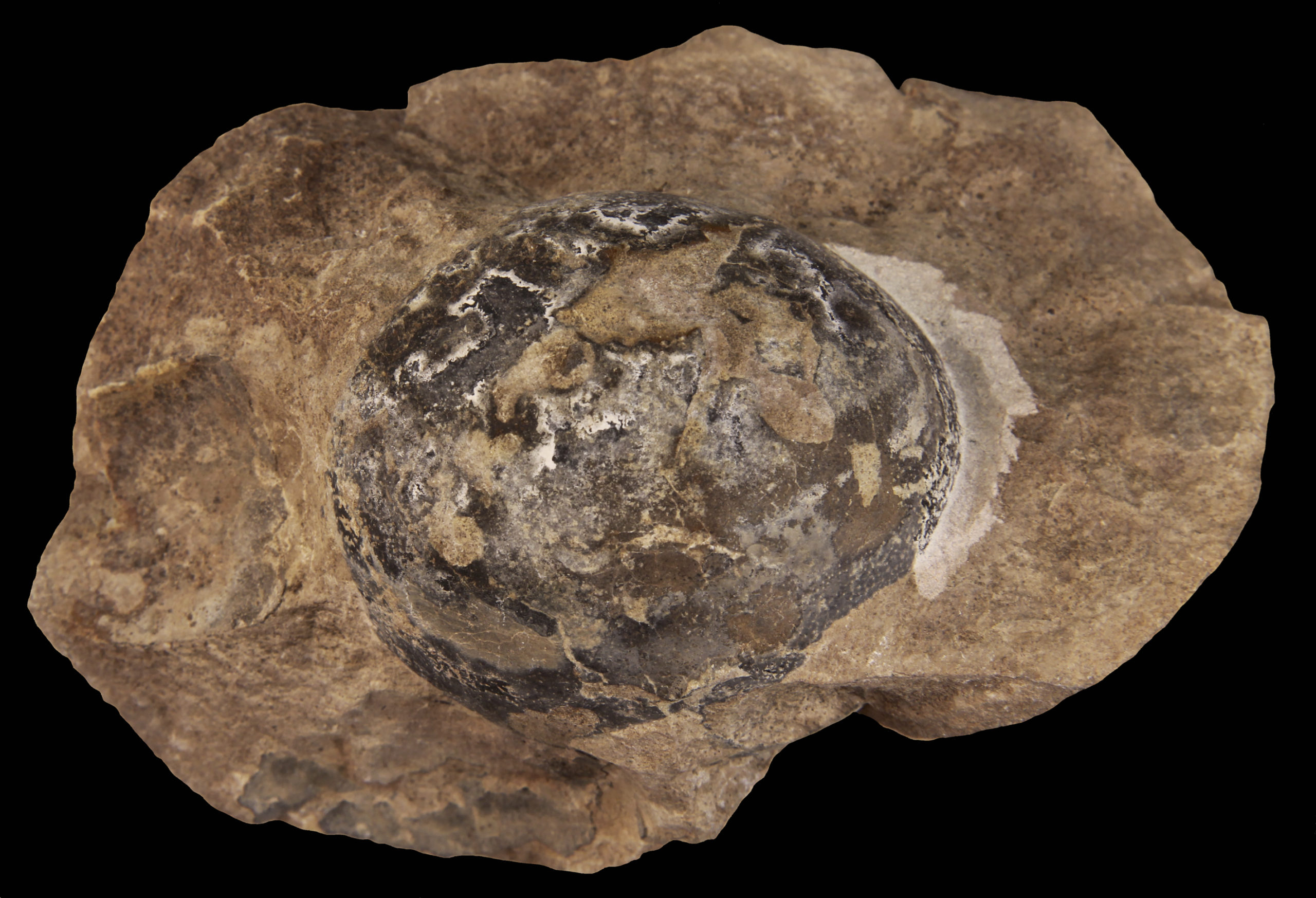
“From our study, we can…now say that the earliest archosaurs ” the group that includes dinosaurs, crocodiles, and pterosaurs ” had soft eggs,” said Matteo Fabbri, a co-author of the study and a graduate student at Yale University. “Up to this point, people just got stuck using the extant archosaurs ” crocodiles and birds ” to understand dinosaurs.”
These soft-shelled eggs were likely buried in wet soil or sand and kept warm with rotting plant matter, similar to the strategy used by modern reptiles, according to the researchers.
Looking ahead, other scientists should perform complementary analyses of these specimens to affirm the novel approach used by the authors and to rule out artifacts produced by the fossilisation process.

The second study, co-authored by paleontologist Julia Clarke from the University of Texas at Austin, describes an absolutely gigantic soft-shelled egg from Antarctica. Found practically intact but collapsed and folded over, the egg is the size of a football. Oddly enough, the only animal known to produce larger eggs is the extinct elephant bird of Madagascar, which was preyed upon by humans some 10,000 years ago.
The fossilised egg was found in 2011 by Chilean scientists in Late Cretaceous marine deposits and dated to 66 million years ago. It measures 11.4 inches long and 7.9 inches wide (29 cm x 20 cm). Paleontologists didn’t know what to make of the fossil, until Clarke identified it as being an egg.
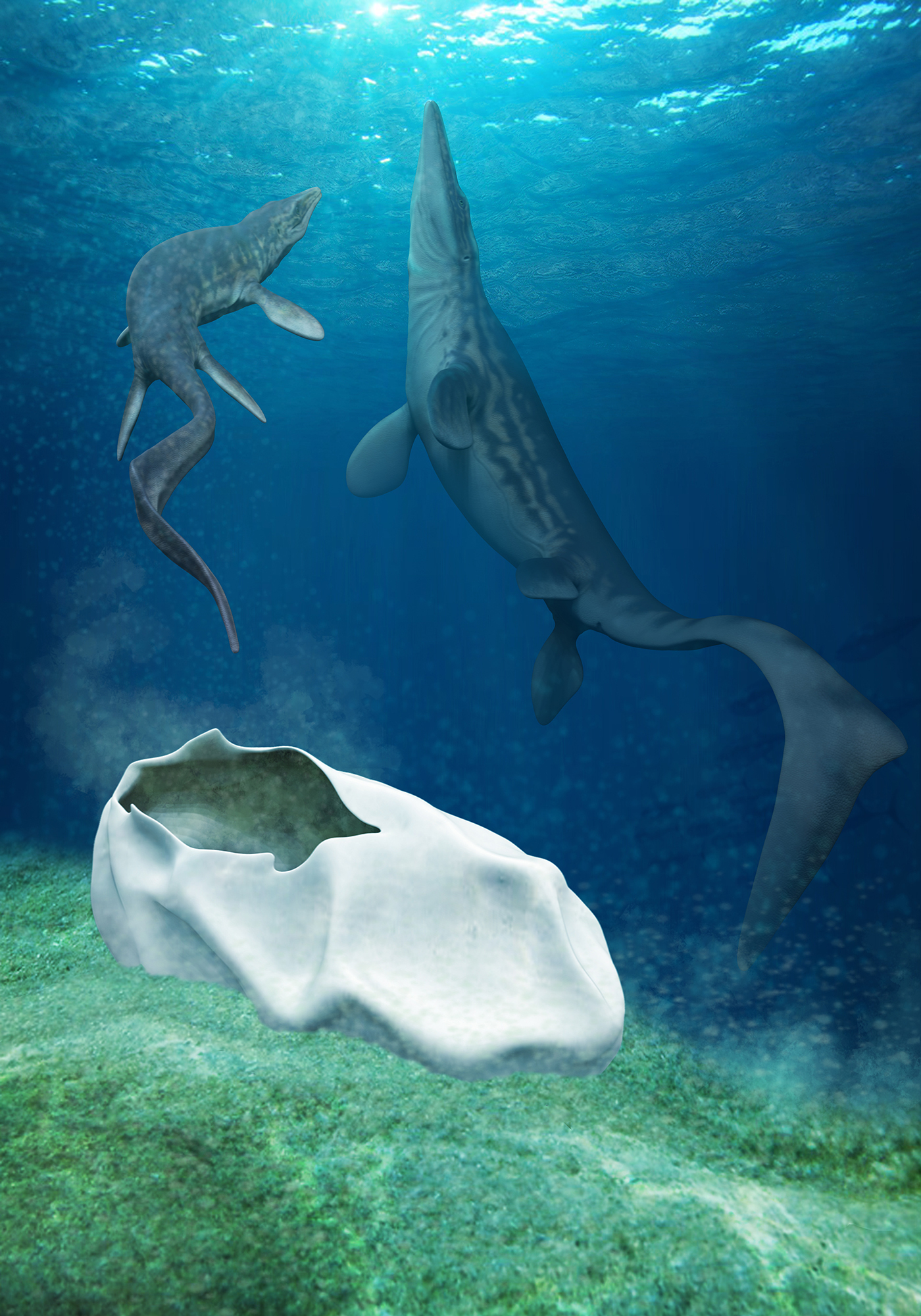
“It is exceedingly rare. Nothing like this, in size and structure, has been found before,” Clarke told Gizmodo, in reference to this now being the largest known soft-shelled egg. “And no eggshell of any kind was known from Antarctica,” she said. “That soft-shelled eggs could get so big” was a huge surprise.
Indeed, the new paper is teasing our conceptions of how large soft-shelled eggs can grow.
Analysis of the fossil revealed a thin outer shell with a structure that lacks a crystalline outer layer ” the structured portion of the mineralised part of the egg. Its structure is somewhat reminiscent of transparent, quick-hatching eggs laid by modern snakes and lizards. These attributes, along with its dimensions, point to an ovoviviparous mode of egg rearing, in which a vestigial egg develops inside the mother and hatches immediately after it’s laid.
The egg was assigned to the trace fossil Antarcticoolithus bradyi, but the exact species responsible for the egg is not known; this is a hatched egg, so there’s no sign of its former occupant. That said, the egg’s dimensions are consistent with the skeletal remains of mosasaurs, a gigantic marine reptile. This is an important inference, as scientists aren’t certain if these sea creatures laid eggs. Importantly, the deposits in which this egg was found also contain fossils of mosasaurs, adding further credence to this claim.
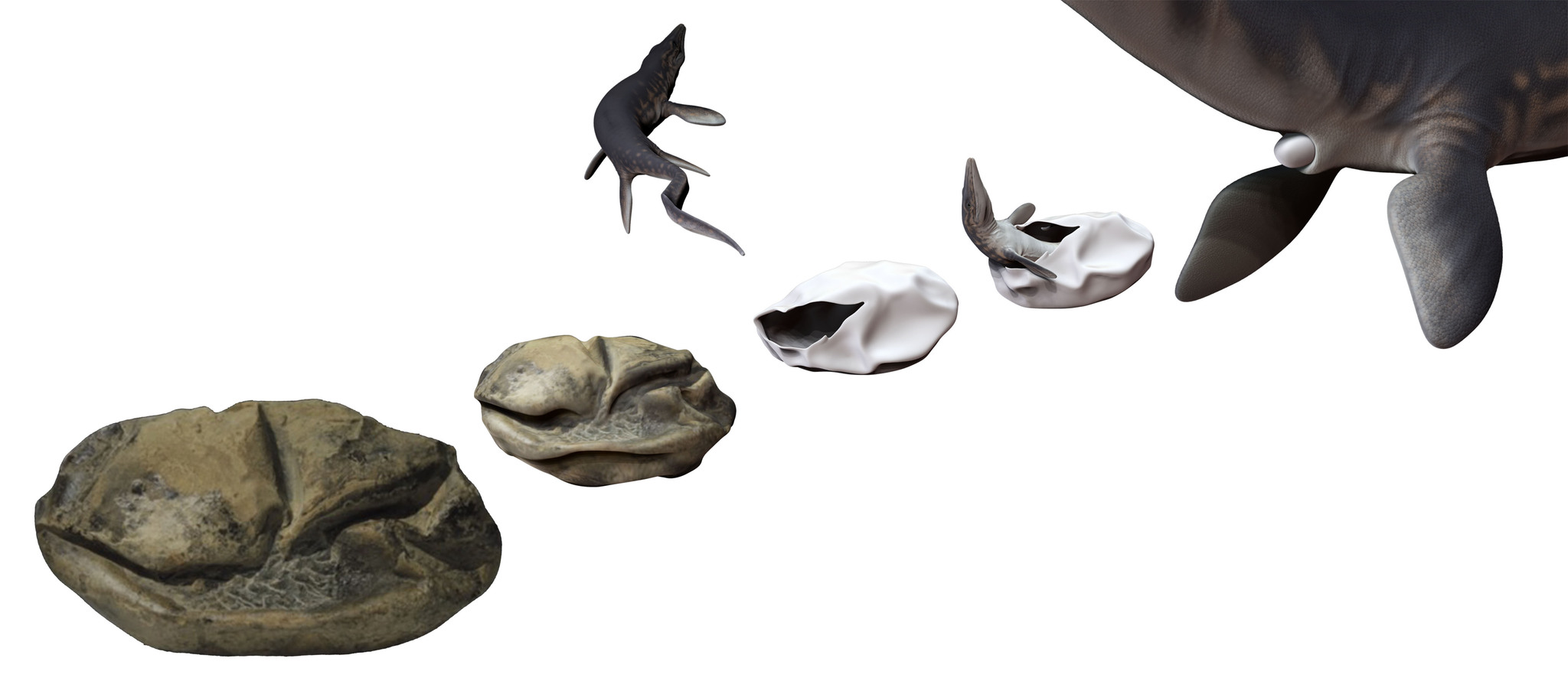
Importantly, the authors think it unlikely that the egg came from a dinosaur, as Clarke explained to Gizmodo in an email:
No dinosaurs of the body size necessary to be the egg layer are known from Antarctica. All known dinosaur eggs of a size approaching that of the new egg are hard shelled and with a much thicker shell. All soft shelled eggs reported for dinosaurs are much smaller. Dinosaurs lay eggs on land while marine reptiles reproduce in the water. If this was from a giant unknown dinosaur in Antarctica, it needed to stay intact during its voyage from land to sea. The egg is nearly complete and very thin, which is much more consistent with a short voyage to the sea floor.
As to where mother mosasaurs laid their giant eggs is anyone’s guess, but the authors posit two possibilities: either in the open water (similar to modern sea snakes) or on a beach. Given the size of these monsters, the latter scenario seems a bit of a stretch. Still, the authors “can’t exclude the idea that they shoved their tail end up on shore because nothing like this has ever been discovered,” said Clarke in a press release.
These new studies are rightly drawing attention to the importance of soft-shelled eggs in the evolution of amniotes, that is, animals capable of laying eggs on land or retaining a fertilised egg within the mother’s womb. That said, the emergence of hard-shelled eggs was a major game-changer, as their superior protective qualities led to greater reproductive success and further diversification and spread of the amniote clade.
